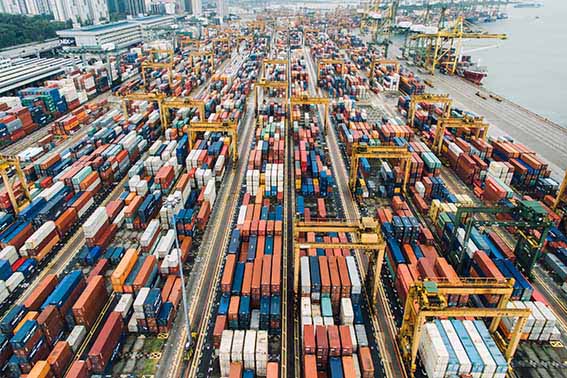EVFTA Ready To Start! How Will It Boost Vietnam Manufacturing?
Date: 2020-07-22
News Type: Marketing News

After a decade of talks and negotiations, the European Vietnam Free Trade Agreement (EVFTA) has been ratified by the Vietnamese assembly. The trade deal will likely take effect on the 1st August 2020. Vietnam has long been seen as the‘Workshop of the World’ with its ever-growing manufacturing sector and this trade deal should only support this expansion. It will reduce tariffs on products imported into the EU market over the course of 7 years, with some commentators pointing to 44% increase in imports.

The Current State of Vietnam Manufacturing
Even before this Pandemic, a lot of companies (particularly US-based) were looking to spread their Asian sourcing across the region. This has ensured that they were not too dependent on one market. Certainly, Vietnam sourcing was a key component of this strategy. However, the country’s manufacturing sector was at full capacity.
To a point, there have always been limitations in terms of scale and supplier networks. For the first, you just have to look at the population when compared to China; circa 90 million as a total population against 1.6 billion people. In fact, the migrant worker population within the Chinese manufacturing sector is still estimated as 300 million strong.
Secondly, Vietnam has often relied upon other markets for raw material supplies and accessories. This added to both lead time and also price.
EVFTA & The Future
This trade deal will reduce the tariffs on imports into the EU, almost all tariffs over a 7 year period. The good news is that after the deal takes effect, under the GSP regime, the EU will eliminate approximately 85% of import tariffs on Vietnamese goods. Conversely, it reduces barriers for EU businesses to invest and operate within Vietnam. This is all at a time when trade wars, protectionism are on the rise and the Pandemic has disrupted sales markets globally. Undoubtedly, this will open up the manufacturing sector to additional investment, both domestic and international, as companies look to take advantage of the available labour, rates and manufacturing opportunities.
Product categories that will benefit include:
– Footwear
– Furniture
– Garments & Apparel
– Furniture
– Garden Products
The key role of raw materials
One point that is pertinent to the benefits of this Free Trade Agreement is centred on the rules of origin that will qualify for the Certificate of Origin being issued and the reduction in the duty on import. In the past, Vietnam has been reliant on the import of raw material coming in from overseas. Consequently, some industries are going to enhance their local supply chains to take advantage of this deal.
Requirements for the tariff reduction
‘’Originating” will be key to the tariff reduction. Products will be considered ‘’originating” under the Treaty if they meet one of the following requirements:
• Wholly obtained in Vietnam; and
• Products produced in Vietnam incorporating materials which have not been wholly obtained there, provided that such materials have undergone sufficient working or processing within Vietnam.
Many goods still do contain materials and components imported from countries not party to a trade agreement. In fact, sectors like automotive and electronic are good examples where greater domestic production is needed before any advantages of the FTA will be attainable. Currently, 62% of materials for the electronics industry and 53% from the automotive sector are sourced from abroad. Therefore, greater efforts are required to improve linkages between domestic suppliers and foreign enterprises.

Resource from et2c.com, and shidai.vn.
More news
- VietnamWood's Digital Path to Woodworking Excellence 2023-11-02
- 【VietnamWood 2023】Profession and Entertainment ALL in ONE 2023-09-23
- 【VietnamWood 2023】 Has a successful start 2023-09-21
- 【VietnamWood 2023】Highly reputed by exhibitors 2023-09-22
- Smart Wood Manufacturing by VietnamWood 2023 at SECC on 9/20-23 2023-09-20
- HAWA Renewed Strategic Cooperation with VietnamWood 2023-07-07



